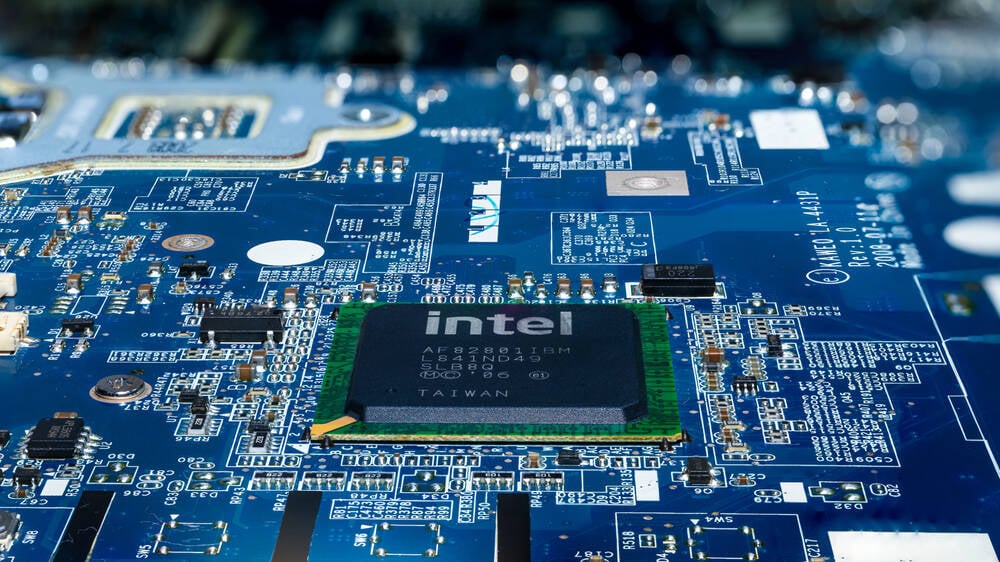Intel's $2.8B Q1 Loss And 36 Percent Revenue Slide Were Slightly Less Horrible Than Expected

Updated Intel CEO Pat Gelsinger has defended the company's plan to become a chipmaker for hire after the company's profits plunged 134 percent year over year and it recorded a $2.8 billion loss during the first quarter of 2023.
Intel has traditionally built fabrication plants to manufacture its own chips, but has seldom built silicon for third parties. Gelsinger reversed that policy, deciding that Intel must develop a substantial foundry business.
"While everyone understands that we are establishing an internal foundry model, I'm not sure we have fully explained the importance and impact of this change," he said, insisting that hiring out its chipmaking chops will drive efficiencies, reduce development and design costs, and allow the company to better compete with chipmakers that rely on rival fabs.
The comments come as Intel pushes ahead with plans to invest roughly 30 percent of its annual revenues into capex to support of its massive foundry construction projects.
Despite Gelsinger's enduring confidence in the company's Integrated Device Manufacturing 2.0 strategy, the benefits of the plan are yet to become apparent: Intel's Q1 revenues, announced Thursday, fell 36 percent year-on-year to $11.7 billion. This decline, while not as bad as predicted, permeated Intel's product range during the quarter with all but one of the company's business units posting double-digit declines.
Gelsinger characterised the numbers as "solid first-quarter results, representing steady progress with our transformation."
Once again, Intel's Datacenter and AI (DCAI) and Client Computing (CCG) groups saw the largest dips, sliding 39 and 38 percent year over year to $3.7 billion and $5.8 billion respectively. In both cases, Intel CFO David Zinsner cited elevated inventory levels compounded by a contraction in overall demand for CPUs.
However, the situation may be worse than it looks. Notably missing from Intel's financial report was any mention of its Accelerated Computing Systems and Graphics (AXG) group. The division has suffered repeated setbacks over the past few months.
After restructuring the AXG in December, Intel dumped some products and delayed others. The group waved goodbye to boss Raja Koduri last month.
During Thursday's call Zinsner noted that, at least for the purposes of reporting, client and datacenter products from the company's former AXG business had been absorbed by the company's DCAI and CCG groups, likely inflating their revenues in the process. However, since it's not broken out the figures, it's hard to know the impact of that change. For reference, last quarter the AXG division made $247 million in revenues.
Curiously, it doesn't appear as though Intel has given up on its GPU ambitions or the AGX group. Yesterday, former DCAI Chief Technology and Strategy Officer Deepak Patil posted news he's taken the job as the new head of the AGX group. We've reached out to Intel for clarification; we'll let you know if we hear anything back.
- Hands off, vendors – it's for research! $11B of US CHIPS funds earmarked for NIST fabs
- Don't get in a semiconductor 'doom spiral' – sector will be back with a bang in 2024
- AMD probes reports of deep fried Ryzen 7000 chips
- Intel axes Blockscale mining ASICs it brought out just in time for crypto winter
Intel's Network and Edge (NEX) group, also continued its precipitous decline during the quarter with revenues falling 30 percent to $1.5 billion. Meanwhile, Intel Foundry Services — which is still getting off the ground — fell 24 percent to a mere $118 million. The only business unit to post positive revenue growth during the quarter was Intel's Mobileye autonomous vehicle division which grew 16 percent year over year to $458 million.
With the first quarter behind it, executives suggested that the company had hit rock bottom and is now on the road to recovery. "While we remain cautious, we're seeing green shoots and expect sequential revenue growth throughout the year," Zinsner told investors.
And that confidence bears out in the company's Q2 forecast, which calls for revenues in the range of $11.5-12.5 billion. That's still a 18 percent YoY decline in the best-case scenario, but an improvement over the 30-plus percent declines of the past two quarters. ®
Updated to add
An Intel spokesperson has told us:
Read more... Dive deeper into Intel's financial future here.
Metas Yann LeCun: Current AI Methods Wont Achieve Human-Level Intelligence
Yann LeCun, Meta’s chief AI scientist, has made a bold assertion that large language models (LLMs) will not achieve hu... Read more
XAI Nears $6 Billion Funding Round With New Investments From Leading VCs
Elon Musk’s artificial intelligence venture, xAI, is on the verge of completing a significant $6 billion funding round... Read more
Legal Challenges In Sachin Dev Duggals Entrepreneurial Journey
Sachin Dev Duggal, the visionary founder of Builder.ai, has achieved remarkable success in the tech industry. However, h... Read more
Vertex Ventures To Raise $65 Million For Japan-Focused Fund
Singapore – Vertex Ventures, the venture capital subsidiary of Temasek, is set to launch its first fund dedicated to J... Read more
Tech Industry Takes On Nvidias CUDA With Open-Source AI Software Solutions
Seattle, WA — In a bid to diversify the AI development ecosystem, OpenAI and a coalition of tech companies are working... Read more
Huawei's 'AI-in-a-Box' Solutions Threaten Cloud Market Leaders
Shanghai, China — Huawei is at the forefront of a new trend in the tech industry: 'AI-in-a-box' products that empower ... Read more

